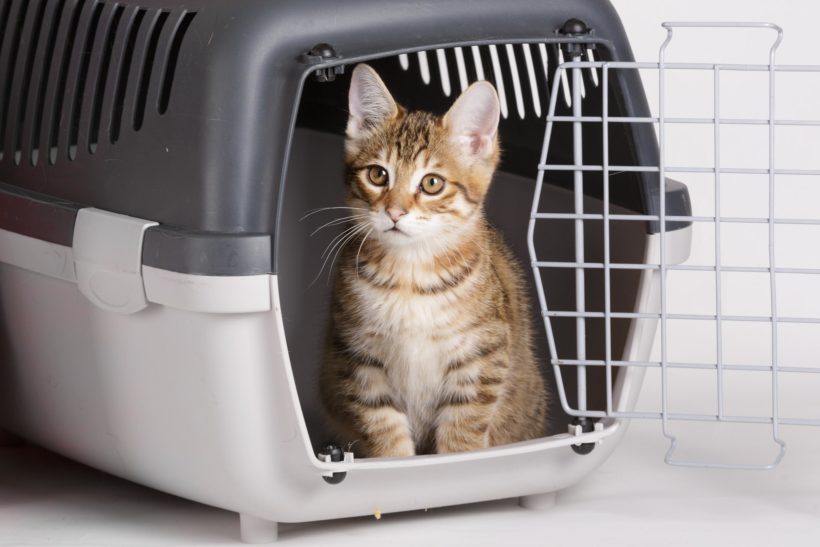
Cat Crate Training: Instructions and Tips
By Sherry Woodard, Best Friends animal behavior consultant
By training your cat to relax in a crate, both you and your cat will have less stress when you need to put her in a crate. Trips to see the family vet, for instance, are a lot less anxiety-provoking. Having a cat who’s comfortable in a crate also makes it much easier if you ever have to evacuate your home because of an emergency.
Steps for crate training a cat
How do you crate train a cat? First, buy a crate large enough so your cat can stand up, turn around and lie down comfortably. Put the crate on a stable surface and keep it open. Make it an inviting place: Put soft, comfy bedding inside and add treats inside the crate daily. If your cat likes catnip, you can add some of that or a small catnip toy. Watch to see if the crate becomes a place in which your cat naps or grooms.
If the cat isn’t using the crate, try this exercise multiple times each day: Call your cat by name. When he is looking at you, place a small treat (something he really likes) next to him. Now that you have a motivated cat, dole out more treats, moving the treat closer to the crate each time you call your cat. Once you are at the crate, place a treat just inside and step away. The next time you call him, place a larger treat or two treats in the back of the crate, move away, and watch him.
If your cat still doesn’t go into the crate with these steps, try spraying pheromones (such as Feliway) on the bedding inside the crate. You can also try using wet cat food or changing the treat for a stronger motivation.
If your cat isn’t going into the crate and relaxing in between treat times, move it. A different location may help your cat to enjoy crate time more. As before, offer enticing treats in the crate multiple times each day. After the cat is spending time in the crate, start going to the crate and calling the cat to you. When the cat arrives, practice picking her up and putting her in the crate, with a treat waiting for her in the back of the crate. Place her inside and release her to eat it and walk out if she wants.
Taking a cat in a crate for a car ride
You can take the crate training even further. The next steps can be getting your now-relaxed cat to adjust to being lifted and carried in the crate, and then to being carried to the car and back to your home. You can put the crate in the car, start the vehicle and let the engine run for a few minutes without the car moving, then bring the cat back into the house. You can drive to the nearest corner and then back home, drive to the vet and back home. Remember to give treats every step of the way.
If your cat has had an unpleasant experience in the crate — such as being taken to the vet — it may take some extra effort to again have your cat see the crate as a positive thing. Try doing the exercise above using especially tasty treats inside the crate, and enticing your cat to enter the crate several times a day for a while.
In your home, always keep the crate open and equipped with clean, soft bedding; freshen the catnip periodically and add new toys sometimes. When you have a cat who enjoys spending time in her crate, you can pop her in and take off whenever you need to.


Leave a Reply